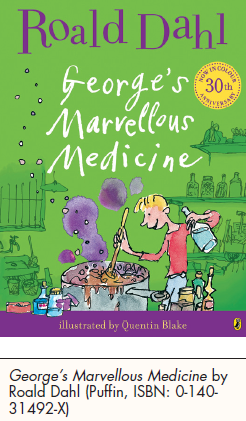
Responding to 20th Century plays: Billy Elliot
£14.95
This scheme of 21 lessons lasts approximately six weeks in core subject lessons. Introduced in our school this year, the module grew from a realisation among staff that our Key Stage 3 students had very little experience of engaging with a full-length piece of drama, and yet at Key Stage 4 they would be expected not only to grapple with challenging texts, such as The Crucible or An Inspector Calls, but also to appreciate their social contexts. Our keenness to offer an exciting, enjoyable and relevant reading experience with a clear social background drew us to the screenplay of Billy Elliot, and the choice has been vindicated by a hugely enthusiastic response from our mixed-ability Year 8 classes.
The screenplay’s explicit language – the very thing that makes students feel that it is real and not patronising – may present difficulties for some schools. It is advisable to let parents know in an advance newsletter that you will be using the text and DVD in class. The main aims of the scheme are to introduce the screenplay format to students, and promote reading and enjoyment of 20th-century drama texts in English lessons. Lessons can be cross-taught in English and drama if desired. In particular, the scheme highlights the importance of relating authorial purpose to context, an area of development for many schools and students.
Drawing on an accessible and relevant 20th-century text, it eases progression into more challenging KS4 drama texts in English. Lessons include reading and performing in-role, language analysis, imagery, context, themes and ideas, and empathic response.
Assessments include an essay, which is largely drafted in class, and uses an assessment foci-based mark scheme for explicit feedback with the students, and a speaking and listening presentation. The class work approach to the essay has had great outcomes, as you have the chance to mingle with students, and provide immediate ongoing verbal and written guidance. However, you may wish to adapt either of these tasks and use the drama elements of the scheme for assessment purposes instead or as well. Ideally, your teaching space should be adaptable for both written and practical work.
Lessons overview:
- Lesson 1: introduction to the language and context of Billy Elliot. Group thought showering; whole-class discussion and reading; introduction to essay task and mark sheet; individual analytical writing.
- Lesson 2: introduction to social context. Individual vocabulary exercise; whole class non-fiction reading; paired empathic writing; higher-level thinking exercise.
- Lesson 3: the theme of masculinity. Whole-class image analysis and discussion of Kipling’s ‘If’; higher-level thinking mini-whiteboard exercise.
- Lesson 4: the old versus the new.Teacher presentation; paired talk; introduction to assessment presentation; individual note-taking and mapping.
- Lesson 5: the pirouette, the bath and the mirror. Peer and individual vocabulary testing; image analysis through wholeclass discussion and modeled annotation; individual analytical writing.
- Lesson 6: ELL and patterns of language in the play for situation. Individual reflection on learning; paired drama work on language patterns; analytical writing.
- Lesson 7: patterns of language for character. Whole-class language analysis through scaling and graphing exercise; skimming and scanning; analytical writing.
- Lesson 8: relating what we know to the film. Whole-class recall game; focused watching of DVD, question and answer activity.
- Lesson 9: pressures on Billy Modeled mind-mapping; individual artwork and group drama response to character.
- Lesson 10: explaining and informing. Series of whole-class connective games; individual writing challenge using reasoning phrases.
- Lessons 11–13: box of inspiration. Individual assessment presentations to be given during these lessons, with peer feedback.
- Lesson 14: Swan Lake – who is the swan in Billy Elliot? Image analysis; whole-class reading and discussion; analytical writing.
- Lessons 15–16: essay drafting. Individual essay-writing with teacher feedback.
- Lesson 17: introduction to pathetic fallacy. Group drama activities based on seasons and emotions; whole-class reading and individual analytical writing.
- Lesson 18: empathy and prediction. Whole-class DVD watching; paired scriptwriting and group performance.
- Lesson 19: sacrifice. Reading and discussion group work.
- Lesson 20: north/south divide. Whole-class image analysis; non-fiction and fiction reading and discussion.
- Lesson 21: creative writing. Whole-class reading; individual creative writing using metaphors.
- Lesson 22: happy endings? Individual prediction writing; reading and watch DVD; discussion.
Number of lessons: 22




